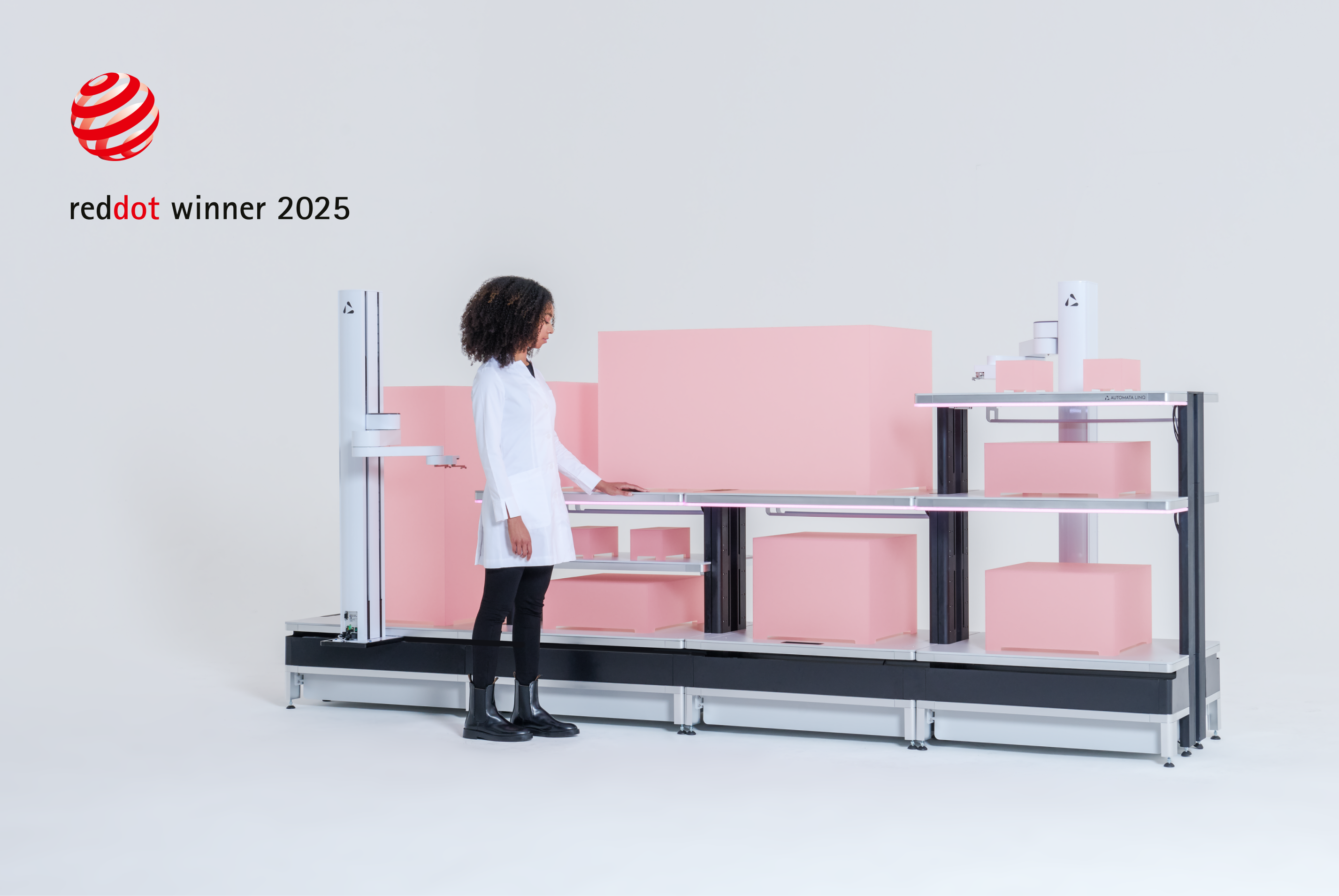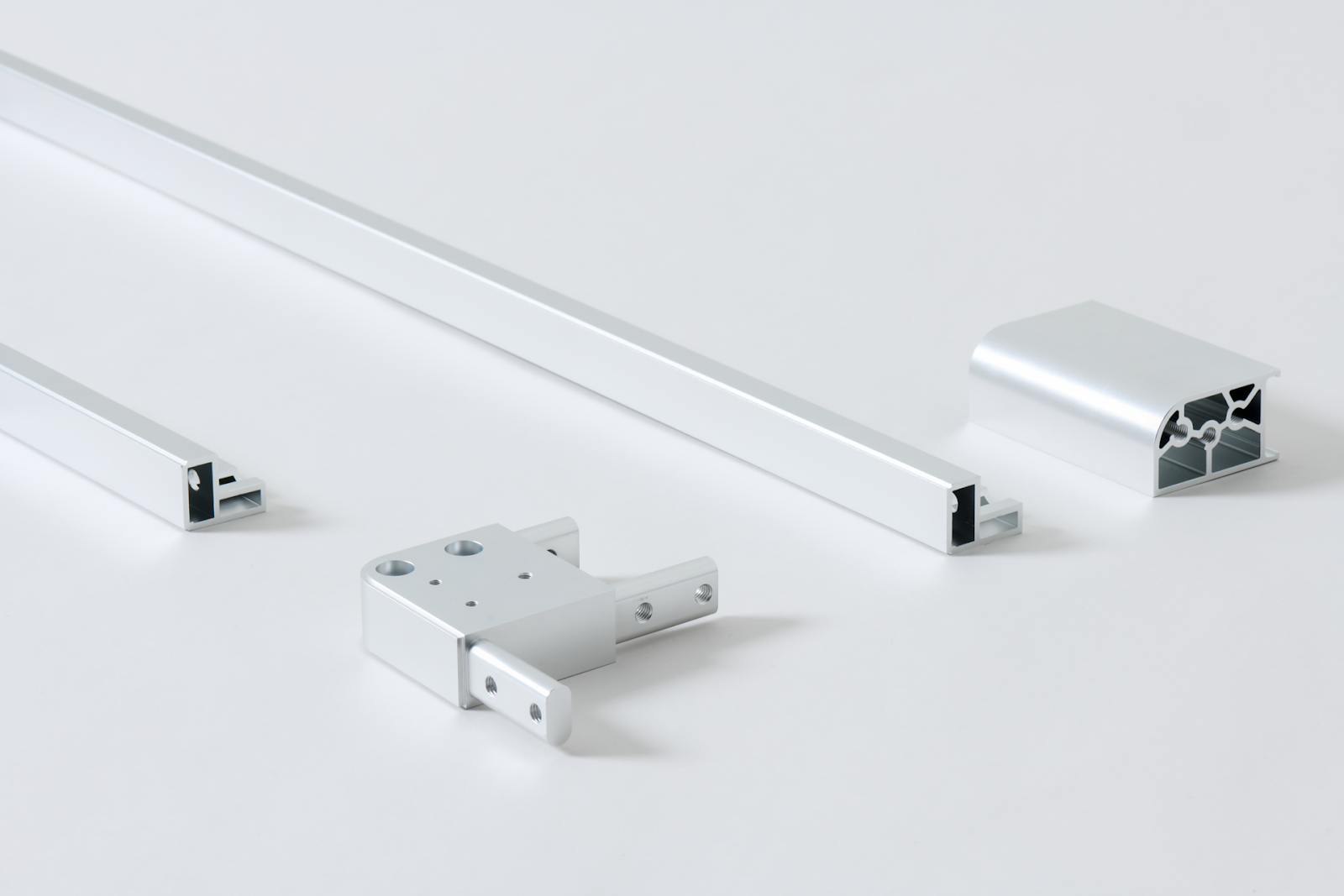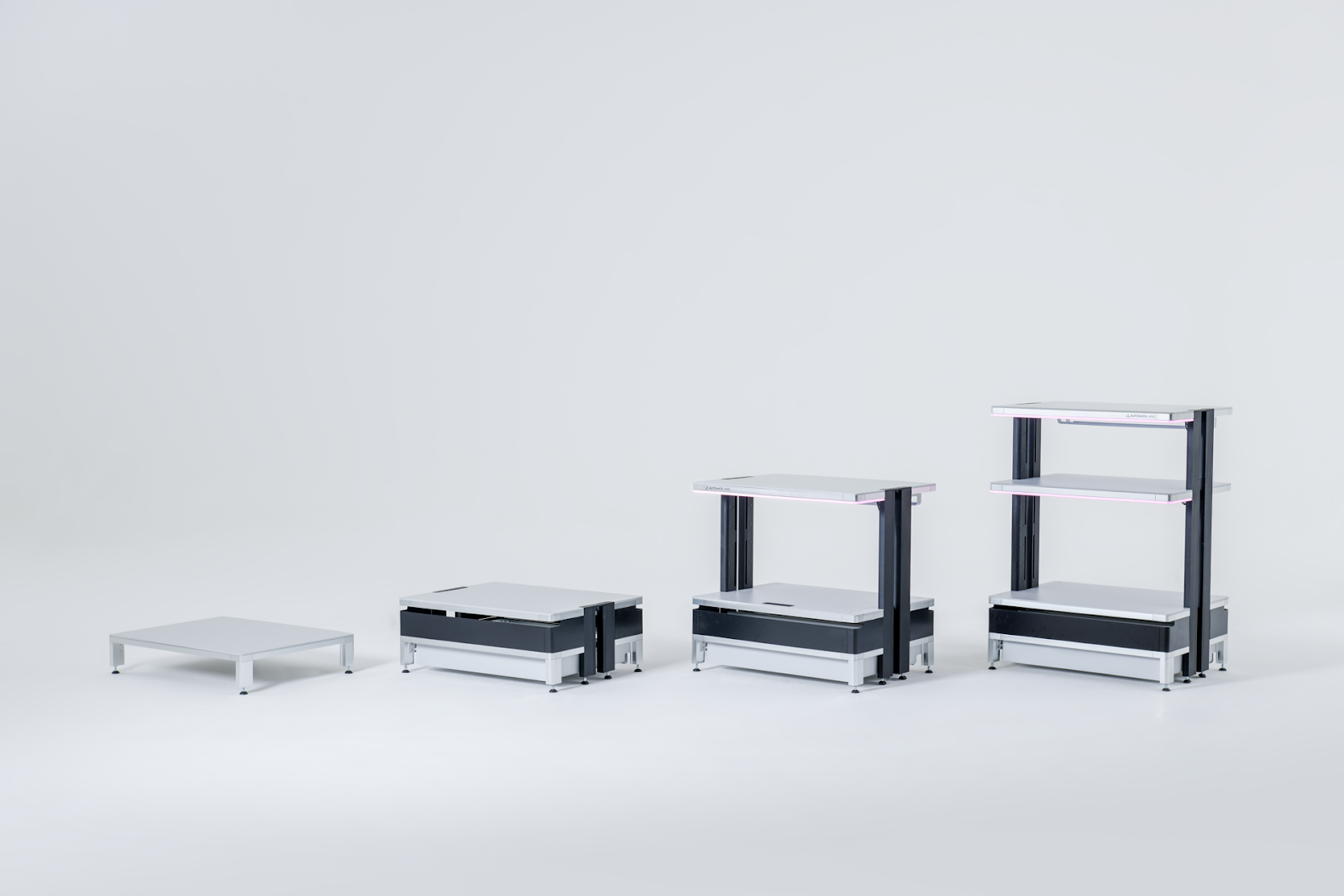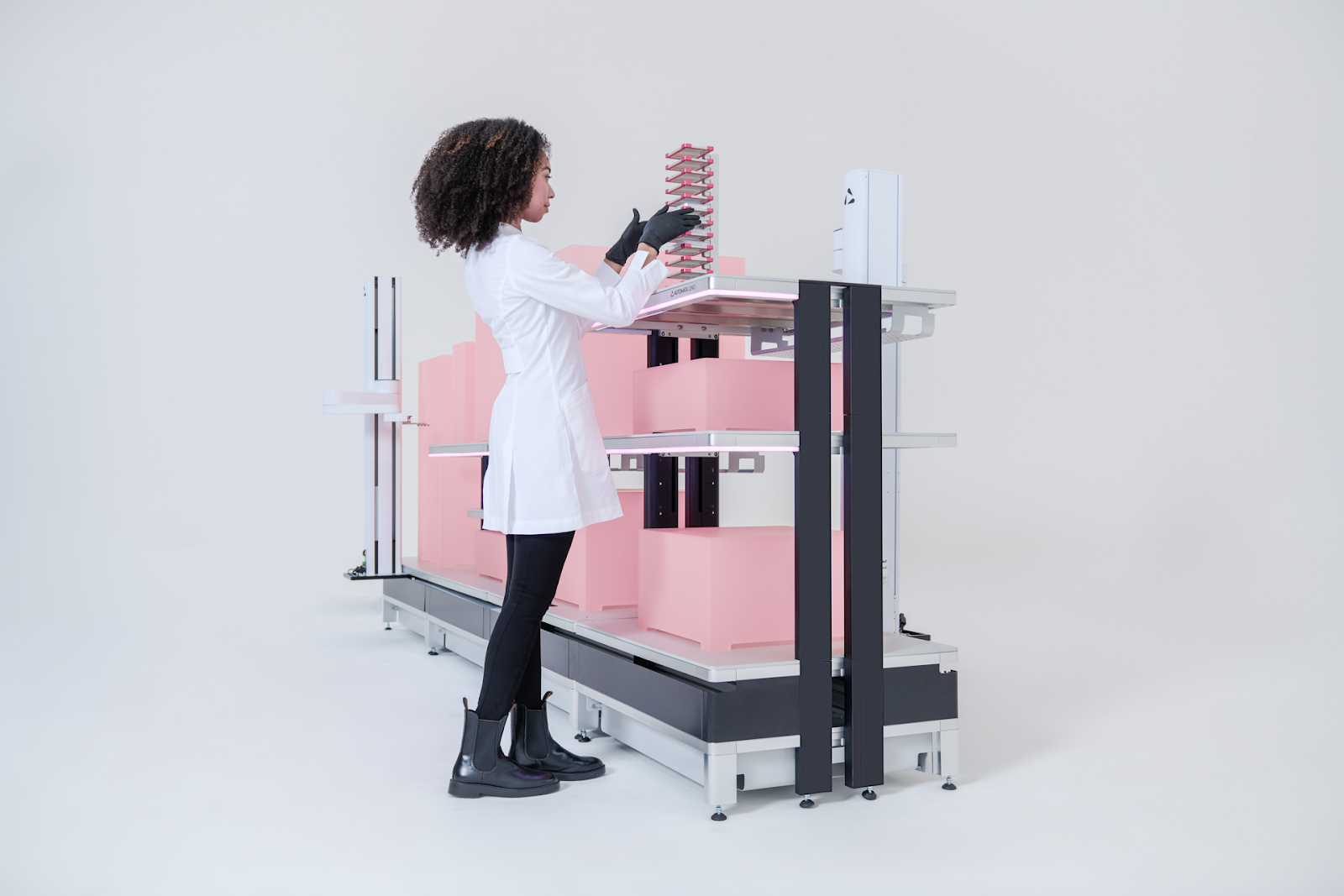Why we doubled down on modularity with the new LINQ Bench
Designed for today. Built for tomorrow.

Award Winning Lab Automation that Moves at Your Pace
What makes for good lab automation? At Automata, we believe it should make labs faster, more adaptable and more productive without forcing a compromise on space, access or usability. Our new LINQ Bench is designed to help labs get up and running sooner, scale with changing needs, and maintain the freedom to choose the right instruments for the job. The updated design has already won two prestigious awards for its innovation and user-focused approach. Whether you are building your first automated workcell or upgrading an existing space, the new LINQ Bench is a platform that grows with you – here’s what we’ve improved to make it better for scientists.
A simpler structure. A smarter lab foundation.

The new LINQ Bench is built from three core components: CNC-machined corner joints, and both horizontal and vertical extruded aluminium profiles. This efficient design means faster configuration across multiple widths, depths and heights, translating to shorter installation times, less disruption and a bench that can be precisely fitted to the available space.
The lightweight frame also means more of the allowable floor load can be allocated to instruments. This matters most in labs where floor load limits can restrict instrument choice, opening the door to equipment that might otherwise have been ruled out.
Configured to fit. Built to scale.

With adjustable bench height, worktop type and worktop position, each LINQ Bench can be tailored to the needs of a specific workflow with additional modules combining to create over 800,000 possible configurations. From compact workcells to multi-bench installations, LINQ Bench can fit the lab without sacrificing capability – with more than 250 instruments already designed and accommodated for.
The benefit to labs is simple: a bench that adapts to you today and can be expanded tomorrow without the need to start again.
Reconfigure bench space without starting over
Workflows evolve. Instruments get upgraded. Throughput targets grow. LINQ Bench enables flexibility by allowing modules to be swapped, upgraded or reconfigured without tearing out and replacing the whole system to reduce downtime, preserve your existing investment and allow automation to keep pace with the science.
Ready to get your lab automated or are planning a change to your workflow? See how easy it is to build your bench.
Standardised modules. Faster deployment.

By using standardised, pre-engineered modules, LINQ Bench combines the precision of a custom build with the speed of an off-the-shelf system with modules that are tested, validated and stocked in advance. This is not just about installation speed – it accelerates the time it takes for your lab to bring new automated workflows online, which means faster results and a quicker return on investment.
Maximising throughput in minimal lab space
Vertical space is an often overlooked resource. LINQ Bench supports multi-tier stacking of worktops, with double, triple or even quadruple layers all within the reach of the SCARA arm which can deliver up to a 300% increase in work area compared to a standard single-tier bench.

Image: Triple stacked nucleic acid extraction workcell
Imagine a genomics lab in a city-centre location where floor space comes at a premium. Triple-stacked worktops can host multiple instruments within the same footprint, as shown here in this Nucleic Acid Extraction workcell. Even in a high-containment cleanroom, vertical stacking can help maximise throughput while keeping the footprint within stringent spatial limits.
Want to see vertical scaling in action? Request a demo.
Human-centred lab automation

Image: Integrated SCARA and free bench access
If you’ve ever worked in an automated lab, you’ve likely experienced the pain of a robot blocking an instrument you need to access, or even contorting yourself to get to the back of a sealer to change a reel. The new LINQ Bench has been designed around both automation and the human in the lab. The SCARA has been integrated within the bench footprint, allowing the user to stand directly at the bench front completely unimpeded for improved ergonomics that make any required manual interaction more comfortable and efficient.

The new Instrument Slider is another example of removing friction from manual use. This sliding worktop extends up to 600 mm for easy access to tricky instruments like the Xpeel, or for replacing those reels at the rear of sealers and peelers. Movement is accurate to less than 1 mm, so instruments can be moved without re-teaching waypoints.
Dynamic lighting across the bench provides clear feedback. Whether it is system status, workflow progress or a prompt for user interaction, the lighting is your at-a-glance connection between hardware and software and crucially – an immediate window into the condition and status of the samples being processed.
Recognised for design excellence, twice

In July 2025, our LINQ platform received a Red Dot Design Award in the Medical Devices and Technology category, placing LINQ alongside innovations from Apple, Polestar, Ferrari and Philips. It also marks our second design award win in as many years, building on the success of the IF Award in 2024.
It is further recognition and vindication of our user-focused and insight-led approach to lab automation that puts the needs of the lab first.
Lab automation designed to adapt
The new LINQ Bench is built to support not just your current workflows but whatever comes next. It reconfigures, expands and scales vertically to maximise throughput. It keeps automation accessible for people and robots alike, and it does this without the compromises of traditional automation solutions and one-off custom builds.
This is how lab automation should work – simple to adapt, reliable in operation and able to move at the pace of science.
If you are ready to accelerate your automation journey, book a call with us today or explore LINQ Bench configurations to see what is possible.

